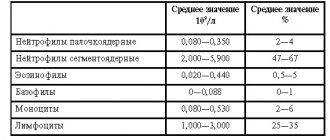Detection of bacteria in urine can be observed in three cases: contamination of the material collected for analysis, infection of the urinary system, and the presence of asymptomatic bacteriuria in the patient. It is the latter that we will devote this material to.
According to the definition of the Infectious Diseases Society of America, asymptomatic bacteriuria is the isolation of more than 10x5 (for men more than 10x3) bacteria per 1 milliliter of urine in individuals without clinical symptoms of a urinary tract infection.
Let's try to explain it more simply. If bacteria are found in the patient’s urine in quantities exceeding the norm, but the person is not bothered by any symptoms from the urinary system (no cutting or burning when urinating, no pain in the bladder and kidneys, no leukocytes in the urine and no temperature), then this situation is called asymptomatic bacteriuria.
In different countries, the incidence of bacteriuria is 3-25% among the general population. In people who initially have a dysfunction of the urinary system, chronic diseases of the urological tract, as well as congenital anomalies of the structure of the urinary organs, the prevalence of bacteriuria is much higher and can reach 40-50%.
Asymptomatic bacteriuria is most often observed in the following groups (see Table 1 below).
| Category of persons | Frequency of occurrence |
| Preschool girls | Less than 2% |
| Pregnant | 2-9,5% |
| Elderly women 65-80 years old | 18-43% |
| Elderly men 65-80 years old | 1,5-15,3% |
| Women over 80 years old | 18-43% |
| Men over 80 years old | 5,4-21% |
| Patients with spinal cord injury | 70-100% |
| Patients with diabetes mellitus | up to 17.7% |
| Patients after kidney transplantation | up to 41% in the first month, up to 21% in the second |
| Bladder catheterization | Increases by 2-7% for each additional day of catheterization |
Table 1 - Frequency of asymptomatic bacteriuria in different categories of the population (Source - Medscape)
When is bacteriuria dangerous?
In most cases, asymptomatic excretion of bacteria in the urine does not pose any harm to the human body and rarely leads to negative consequences.
The only exceptions are certain groups of the population, whose risk of complications of urological infection is much higher than in the general population.
Those at risk for developing complications of bacteriuria are:
- 1Pregnant women.
- 2Persons with planned surgical intervention on the organs of the urinary system.
- 3Persons who have undergone surgery on the urinary system and kidney transplantation.
- 4Patients with a urinary catheter, especially one installed for a long time.
- 5Patients with spinal injury.
- 6Persons with diabetes mellitus, especially in the stage of decompensation.
However, not all patients from the listed risk groups need to be screened for bacteriuria and prescribed treatment. Why?
Dynamic observation of these patients allowed us to establish the following points:
- 1Screening of bacteriuria and its treatment during pregnancy can reliably reduce the risk of developing pyelonephritis.
- 2Identification of bacteriuria and its therapy in patients with diabetes mellitus does not reduce the incidence of cystitis and pyelonephritis, however, this approach contributes to the emergence of resistant strains of microorganisms. Therefore, in this case, the approach “choose the lesser of two evils” is justified.
- 3Detecting bacteria in urine and prescribing antibacterial therapy does not improve the prognosis or reduce the risk of urological complications in patients with spinal injury. Therefore, screening in this case is not justified.
- 4In persons with a long-term urinary catheter, screening for bacteriuria is not necessary for the same reason as in patients with diabetes mellitus. If the catheter is installed for a short period of time (2-3 days), then antibacterial therapy for bacteriuria may be justified.
Thus, detection of asymptomatic bacteriuria and its antibacterial therapy are justified in three main groups:
- 1In pregnant women.
- 2 In persons with planned surgery on the urinary system.
- 3 In persons who have undergone surgery on the urinary system and kidney transplantation (in the first months).
For all other categories of the population with bacteriuria, urine culture is not performed as screening, including even the following persons:
- 1Non-pregnant premenopausal women;
- 2Women with concomitant diabetes mellitus;
- 3Elderly patients, including those living in nursing homes;
- 4Persons with spinal cord injuries;
- 5Patients with a permanent urinary catheter;
- 6Patients with a functioning nephrostomy;
- 7In patients with Candida yeast in the urine;
- 8In renal transplant patients more than 6 months after transplantation.
Interpretation of urine culture results: norm and pathology
The test result is displayed in CFU per 1 ml of urine. CFU (colony-forming units) is an absolute value indicating the number of bacterial cells in 1 ml of urine.
The laboratory will issue a printout of the results, which will indicate all types of microorganisms, their number, measured in CFU/ml, and an antibiogram - groups of drugs to which each type of bacteria is sensitive.
The result of bacterial culture is not always clearly positive or negative. It has reference values that indicate the degree of inflammation.
| Less than 1000 CFU/ml | Normal, no treatment required. |
| 1000-100000 CFU/ml | Re-examination is required. Perhaps the result is distorted due to violation of the rules for preparing or collecting urine. |
| More than 100,000 CFU/ml | If there is an infection, treatment must be started immediately. |
The following icons are placed on the antibiogram form:
| Designation | Level of sensitivity to antibiotic therapy |
| S | high |
| I | moderate |
| R | complete resistance to antibiotics |
Bacteria in urine in pregnant women
Increased interest in the presence of bacteria in urine during pregnancy is due not only to the widespread prevalence of urinary tract infections, but also to the fact that BD often causes complications during pregnancy and infection of the mother-fetus system.
According to the literature, pregnant women with an infectious process in the urinary system are approximately 20-50% more likely to have children with signs of intrauterine infection.
Asymptomatic bacteriuria during pregnancy is one of the most common types of urinary tract infections and reaches a frequency of 16.5% (11). Most often, bacteriuria is considered as a risk factor for pyelonephritis.
The main aspects of the negative impact of asymptomatic bacteriuria in pregnant women:
- 1During gestation, bacteriuria can develop into a clinically manifested urological disease (usually pyelonephritis). Thus, the incidence of pyelonephritis in healthy pregnant women is only 2.8%, while in women with bacteriuria in the absence of treatment this figure can reach up to 30%. A number of authors claim that treatment of asymptomatic bacteriuria during early pregnancy prevents the occurrence of acute pyelonephritis in 80% of cases.
- 2The presence of a focus of chronic infection, even in the absence of symptoms, often leads to intrauterine infection of the fetus, threat of miscarriage, impaired placental attachment, polyhydramnios, and uteroplacental insufficiency.
- 3Pregnant women with bacteriuria have a higher incidence of miscarriage, risk of late delivery and low birth weight babies.
- 4In the presence of asymptomatic bacteriuria, the risk of placental pathology is higher, which can be expressed in impaired differentiation of chorionic villi, thrombosis of the intervillous space and inflammation of the membranes.
- 5The impact of bacteriuria in pregnant women on the fetus is reduced to an increased risk of fetal infection (IUI) and an increased risk of intrauterine growth retardation.
2.1. Diagnostic criteria
The proven negative impact of bacteriuria on the body of the mother and fetus makes it important for its timely detection using the following criteria:
- 1Detection of more than 10x5 CFU/ml of bacteria of the same species in two different bacteriological cultures of urine prescribed at intervals of at least 24 hours (days) in pregnant women who do not have signs of a urinary tract infection.
- 2Single detection of more than 10x5 CFU/ml of pathogenic bacteria when collecting urine using a urinary catheter.
The severity of the listed diagnostic criteria is due to the fact that with a single culture of urine in pregnant women, in approximately 35-40% of cases, contamination with microorganisms from the skin of the perineum is possible.
That is why double urine culture is recommended to protect the fetus and the pregnant woman from unjustified antibiotic therapy.
Today, the most important criterion for BD (the presence of bacteria in the urine more than 10x5 CFU/ml) has been criticized as overly strict for pregnant women, but is justified as rational, in connection with the results of studies in which the excretion of bacteria in the urine in a titer of 10x4 led to increased number of pregnancy complications.
In Russia, clinical examination of pregnant women with double urine culture for the presence of bacteriuria is still not carried out due to the relative high cost, however, it is planned to introduce more accessible diagnostic methods and test systems (Display, paper rapid tests) in the near future..
Preparing for the procedure and collecting urine for culture
To obtain a real picture of the state of the internal microflora, it is extremely important to comply with all requirements regarding the preparation and collection of urine:
- material should be collected before starting antibiotic therapy;
- a week before the analysis, avoid eating colored vegetables (carrots, beets), alcohol, fatty, salty and smoked foods;
- women should not submit urine for culture during menstruation, a week before or after;
- douching is prohibited the day before;
- 2 days in advance, stop taking diuretics (both traditional and traditional medicine), medications and contraceptives in the form of vaginal suppositories;
- one day before urine collection, avoid sexual intercourse;
- the day before, do not drink a lot of liquid so as not to reduce the number of bacteria in the discharge;
- reduce physical activity to avoid possible changes in urine composition;
- use a sterile dry container. The best option is a plastic cup with a lid (sold in a pharmacy), since containers stored at home are quite difficult to sterilize properly. For infants, it is recommended to use a sterile bag or disposable urine bag;
- Do not collect urine from a vessel or urine bag;
- the use of a catheter is allowed only in extreme cases;
- it is necessary to open the container only with clean hands immediately before collecting the material, do not touch the inside and edge of the container;
- before collecting the material, you need to carry out thorough hygiene of the genital organs (the products should not contain an antiseptic), then wipe dry;
- collect the average portion of morning urine, i.e. flush the first and final stream into the toilet;
- if nephrotuberculosis is suspected, material collection should be carried out 3 times a day for 3 days;
- Women need to cover the vaginal opening (for example, with a tampon) so that mucus from it does not get into the urine. This is important because it also contains various bacteria;
- the amount of urine required for analysis is 20-50 ml, for children 10 ml is considered sufficient;
- Deliver the collected material to the laboratory within 2 hours (store in a cool, dark place). If necessary, an 8-hour holding period in the refrigerator is allowed.
Patient management tactics
The widespread prescription of antibiotics for the treatment of bacteriuria is not justified and can lead to complications such as:
- 1Increasing frequency of infections involving microorganisms resistant to antibacterial therapy;
- 2 Development of adverse reactions (including antibiotic-associated diarrhea);
- 3Reinitiation of the organism by antibiotic-resistant flora;
- 4Toxic damage to internal organs.
According to Russian and European urological guidelines, treatment of BD is recommended ONLY in certain population groups, which include::
- 1Pregnant women (Ib, recommendation A);
- 2Persons with planned resection (transurethral) of the prostate gland (Ib, recommendation A);
- 3Persons with other planned traumatic urological interventions (IIa, recommendation B);
- 4Women with catheter-associated bacteriuria persisting for more than 48 hours (in this case, it is necessary to consider the possibility of prescribing a short course of antibiotic therapy) - IIa, recommendation B).
The choice of drug is made after determining the sensitivity of the pathogen to antibiotics. This study is certainly accompanied by urine culture.
3.1. Features of treatment for pregnant women
The choice of an antibacterial drug for the treatment of bacteriuria in a pregnant woman directly depends on the degree of its passage through the placenta, which limits the negative impact on the fetus.
Among the antibiotics used during pregnancy, the most commonly used and safe are B-lactams (penicillins, cephalosporins, carbapenems and monobactams).
It is preferable to use antibiotics with a narrow spectrum of antimicrobial activity, which provides less negative impact on the state of the intestinal microflora, and therefore less often leads to the development of antibiotic-associated diarrhea.
Choosing a treatment regimen for treatment during pregnancy:
- 1The drug of choice is fosfomycin 3 g once (preferably at night). Fosfomycin has high clinical activity against most uropathogens. The concentration of antibiotic in the urine sufficient to ensure an antimicrobial effect is maintained for 3 days after administration. It has been proven that even a single dose of fosfomycin for asymptomatic bacteriuria is equivalent to a 7-day dose of amoxicillin clavulanate. If the concentration of pathogens is initially high, then it is possible to re-administer the drug after 24 hours. Longer use of fosfomycin is not recommended, which limits its use for pyelonephritis;
- 2Alternative drugs – amoxicillin clavulanate, cefuroxime axetil, nitrofurantoin. The drugs are prescribed orally in standard dosages for a course of 7 days.
Modern therapy for bacteriuria in Russia is far from perfect. According to multicenter studies, in 100% of cases, pregnant women with bacteriuria are prescribed herbal uroseptics. Only in 14.8% of cases were additional antibiotics prescribed.
This approach to therapy can hardly be called optimal. The main mistakes are:
- 1 Prescription of medications with no proven effectiveness (dietary supplements, herbal preparations);
- 2 Prescription of antibiotics with a level of resistance to them in pathogens of urological infections of more than 20%;
- 3 Prescription of antibiotics that are dangerous for fetal development (for example, fluoroquinolones).
Indications for prescribing urine culture
The content of the article
A urine culture test can be prescribed by a physician, gynecologist, urologist or pediatrician in the following cases:
- for infections of the urinary system (recurrent cystitis, pyelonephritis, urological pathologies, urolithiasis);
- for diseases of the gastrointestinal tract (enterococcus and dysentery);
- for diabetes, pregnancy and infertility, immunodeficiency, tuberculosis, HIV;
- to monitor the effectiveness of infection treatment;
- to clarify the diagnosis in case of ambiguous symptoms;
- to identify the resistance of microorganisms to antibacterial therapy.
Urine culture may also be prescribed if the following symptoms are present:
- cutting pain during urination (observed with cystitis);
- violation of the frequency of urination (may indicate kidney damage, prostatitis);
- nausea, vomiting, general weakness, fever (symptoms of kidney disease);
- lower back pain (a signal of the possible development of bacteria in the kidney tubules);
- change in urine color.











